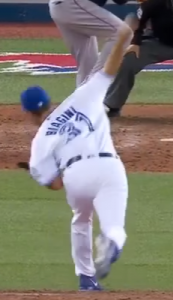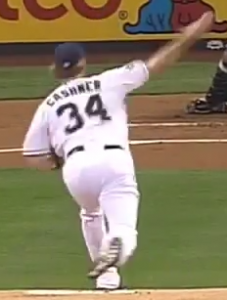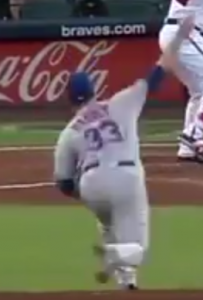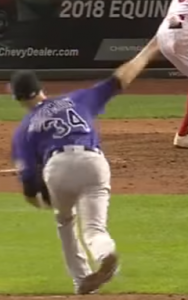A few weeks ago at BP Toronto, I wrote a piece about Joe Biagini that essentially listed all of the reasons he’d fail as a starting pitcher. He seems to be doing better than expected, but the issues raised in that piece are still of concern. As he’s started more games, the release speed of his pitches still declines every inning, and he hasn’t blended his pitches any better than he first did.
Two things have changed, though. To quote myself:
A possible fix to this would be throwing dramatically more curve balls to gain some of the hill effect and make batters uncomfortable, but this might negatively impact his ability to limit walks.
Out of nowhere, in a game called by Luke Maile on June 3, Biagini threw 40 curve balls of 100 total pitches. While the elevated curve ball usage certainly played a part in this fantastic most recent start, something else has been keeping Biagini performing well, I just didn’t think of it until recently.
Biagini’s fastball is categorized improperly by Baseball Savant, MLBAM, Fangraphs, Brooks. Every single possible categorization of this pitch is wrong. He calls it a two-seam, it looks like a two-seam, but every one calls it a four-seam. Why they get it wrong is part of why it makes him such an extraordinary pitcher.
Biagini’s fastball appears, for all intents and purposes, to be an entirely average moving pitch. It has a z-score of 0.03 when it comes to vertical movement, and -0.84 when it comes to horizontal, according to Brooks. This would mean Biagini has slightly above average run and exactly average ride. Overall, a seemingly unspectacular pitch.
Last year when I wrote about Biagini’s arsenal, I found some comps for his fastball. The closest were, in order, Jeff Hoffman, Andrew Cashner and Matt Harvey. All good comparisons, all have good fastballs, but there is one thing that is exceptional about Biagini compared to this trio. For a bit of background, this was Harvey’s down year, where he had a fairly average fastball. Hoffman was in his rookie season, with only a few appearances and was fine. And Cashner was bouncing from rotation to pen, after a trade and really wasn’t very good either. I teased that there was something that set Biagini apart, and here it is:
Joe Biagini has a significantly higher release point than the rest of his closest comps. Generally, with a lower release point, you’d expect more run and less “rise”, vice versa with a higher one. Biagini’s two-seam fastball behaves as if he had a much lower release point than he actually does. This is where the deception comes from.
You would expect a pitcher, out of that arm slot, to have closer to 11 inches of ride than Biagini’s ~9, and you would expect it to have closer to 2 inches of run than his ~6. The exceptions to most arsenal rules go something like, “This is true, unless someone is really weird,” and upon first look, Biagini’s fastball isn’t, but with further digging, it is of course.
You could view it in another perspective, too. If you assume that it’s actually a two-seam fastball then that means Biagini has the most extreme ride of every two-seam fastball, and an extremely small amount of run. All in all, this pitch confuses hitters because of how unique it is, but you’d have to spend way too much time thinking about this issue to realize it.
So do I think that he will be a successful starting pitcher? I’m not sure anymore, but I’m closer to yes than I used to be. I still think that if his change up more closely resembled his fastball he’d be better, but he’s also proven that he can survive without it.
Lead Photo: © Kim Klement-USA TODAY Sports




